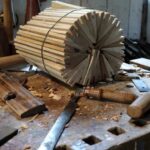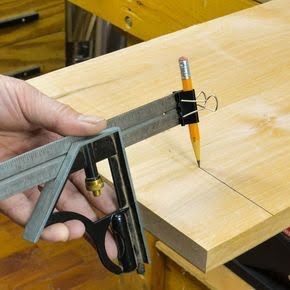Japanese woodworking has been revered for its precision, artistry, and rich tradition. At the heart of this esteemed craft are the Japanese woodworking masters, who have dedicated their lives to honing their skills and preserving a centuries-old tradition. The role of a Japanese woodworking master goes beyond that of a skilled artisan; they embody the wisdom, dedication, and spirit of traditional Japanese culture.
The history of Japanese woodworking dates back to ancient times, with techniques and traditions passed down through generations. In this article, we will explore the history, techniques, and traditions of Japanese woodworking, shedding light on the profound influence these masters have had on traditional Japanese culture.
We will also delve into the artistry and precision of Japanese woodworking masterpieces, showcasing renowned masters and their invaluable contributions to the craft. Additionally, we will examine the influence of Japanese woodworking on modern practices and offer insights into how one can learn from a Japanese woodworking master through workshops, apprenticeships, and available resources. Join us in discovering the world of Japanese woodworking masters and their enduring legacy.
History of Japanese Woodworking
The history of Japanese woodworking dates back to ancient times, with a long tradition of craftsmanship and skill that has been passed down through generations. Japanese woodworking can be traced back to the Asuka period (538-710 AD) when Buddhism was first introduced to Japan, bringing with it the need for temples and other structures. This led to an increased demand for skilled woodworkers who could create intricate designs and detailed joinery.
During the Edo period (1603-1868), Japanese woodworking reached new heights of sophistication and artistry. Woodworking became not only a practical skill but also a form of artistic expression, with craftsmen creating breathtaking pieces that showcased the natural beauty of wood. During this time, the Japanese woodworking master, or “sashimono-shi”, honed their craft through years of rigorous training and dedication.
Technological Advancements
Japanese woodworking also saw technological advancements during the Edo period, such as the invention of the “kumiko” technique for assembling wooden lattice work without nails or glue. This technique allowed for the creation of intricate patterns and designs that are still admired today.
Natural Materials and Sustainable Practices
One key aspect of Japanese woodworking that has remained consistent throughout its history is its emphasis on using natural materials and sustainable practices. Woodworkers often selected materials based on their natural beauty and durability, leading to a deep appreciation for the unique qualities of different types of wood.
The history of Japanese woodworking illustrates how this ancient craft has evolved over centuries, influencing not only traditional culture but also modern woodworking practices around the world. Understanding this rich history provides valuable insight into the techniques and traditions that continue to shape Japanese woodworking today.
Techniques and Traditions of Japanese Woodworking
Japanese woodworking is deeply rooted in tradition, with techniques and practices passed down from generation to generation. The art of Japanese woodworking emphasizes precision, simplicity, and a deep respect for the natural qualities of wood. Below are some of the key techniques and traditions that define Japanese woodworking:
- Joinery: Japanese woodworking is renowned for its intricate and seamless joinery techniques. Woodworkers use precise measurements and cutting methods to create joints that fit together perfectly without the need for nails or screws.
- Respect for Materials: A fundamental principle of Japanese woodworking is the idea of working in harmony with nature. Woodworkers pay close attention to the characteristics of different types of wood, selecting materials that best suit their intended purpose.
- Hand Tools: Traditional Japanese woodworkers rely on a set of specialized hand tools, such as chisels, saws, and planes, which are meticulously crafted for specific tasks. These tools are used with great skill and precision to shape and manipulate wood.
The role of a Japanese woodworking master extends beyond technical proficiency; it also encompasses a deep understanding of cultural traditions and aesthetic principles. The mastery of these techniques requires years of dedicated practice and mentorship under a skilled japanese woodworking master Aspiring woodworkers often seek out apprenticeships or workshops led by these masters to learn the intricacies of traditional Japanese woodworking firsthand.
Japanese woodworking has made a lasting impact on the world of craftsmanship, influencing modern woodworking practices across the globe. Whether through its timeless joinery techniques or its focus on craftsmanship and precision, the influence of Japanese woodworking can be seen in furniture making, architectural design, and fine woodworking today. The legacy of the Japanese woodworking master continues to inspire artisans worldwide to uphold the traditions and artistry of this ancient craft.
The Role of the Japanese Woodworking Master in Traditional Japanese Culture
Japanese woodworking has been an integral part of the country’s cultural heritage for centuries, with its origins dating back to the Asuka period (592-710 AD) when Buddhism was first introduced to Japan. The development of traditional Japanese architecture, such as temples, shrines, and tea houses, led to the refinement of woodworking techniques and craftsmanship. The sasho was responsible for ensuring that these techniques were upheld and passed on through apprenticeships and mentorship.
In traditional Japanese culture, the sasho is not only revered for their technical skill but also for their deep understanding and appreciation of nature. The philosophy of “wabi-sabi” emphasizes finding beauty in imperfection and impermanence, which is reflected in the intricate designs of Japanese woodworking. The sasho’s ability to harmonize natural materials with human craftsmanship is seen as an essential aspect of their role in traditional Japanese culture.
| Japanese Woodworking Master Role | Significance |
|---|---|
| Preserving traditions | The sasho plays a vital role in preserving the traditions and techniques of Japanese woodworking from generation to generation. |
| Artistry | Highly respected for their skill, knowledge, and dedication to turning woodworking into an art form. |
| Nature appreciation | The sasho’s deep appreciation of nature is reflected in their designs as they harmonize natural materials with human craftsmanship. |
Famous Japanese Woodworking Masters and Their Contributions
Japan has a rich tradition of woodworking, with a long history of skilled craftsmen who have honed their craft over centuries. Within this tradition, there are several famous Japanese woodworking masters who have made significant contributions to the art of woodworking. These masters are highly respected for their innovative techniques and their dedication to preserving traditional woodworking methods.
Legacy of the Japanese Woodworking Masters
The legacy of Japanese woodworking masters can be seen in the enduring impact they’ve had on the craft. Their contributions have not only shaped the techniques and traditions of Japanese woodworking but have also influenced woodworking practices around the world. These masters have played a crucial role in passing down their knowledge and skills to future generations, ensuring that the art of Japanese woodworking will continue to thrive.
Notable Japanese Woodworking Masters
One such remarkable figure is Tak Yoshino, an acclaimed Japanese woodworking master known for his intricate joinery techniques and impeccable attention to detail. His work is widely admired for its exquisite craftsmanship and timeless beauty. Another influential figure is Hiroyuki Matsui, whose mastery of traditional hand tools has garnered international recognition. Matsui’s dedication to preserving and promoting traditional Japanese woodworking methods has earned him a reputation as a leading authority in the field.
The Ongoing Influence of Japanese Woodworking Masters
The influence of these famous Japanese woodworking masters extends beyond their own creations. Many contemporary woodworkers continue to draw inspiration from their work and study their techniques in order to incorporate elements of Japanese craftsmanship into modern designs. The enduring impact of these masters serves as a testament to the timeless beauty and enduring relevance of Japanese woodworking in today’s world.
The Artistry and Precision of Japanese Woodworking Masterpieces
Japanese woodworking masterpieces are renowned for their artistry and precision, reflecting the mastery of traditional Japanese woodworking techniques and the deep cultural significance attached to these creations. The meticulous craftsmanship and attention to detail in Japanese woodworking masterpieces have made them highly sought after by collectors and enthusiasts around the world.
The beauty of Japanese woodworking masterpieces lies in the seamless integration of form and function, with a focus on creating objects that are not only visually stunning but also serve a practical purpose. Whether it is a finely crafted wooden furniture, intricate joinery in traditional architecture, or delicate wood carvings, each masterpiece showcases the unparalleled skill and dedication of the Japanese woodworking masters.
The use of natural materials such as hinoki (Japanese cypress), keyaki (Japanese zelkova), and sugi (Japanese cedar) further enhances the aesthetic appeal of these masterpieces, resulting in pieces that exude warmth, elegance, and timelessness. The attention to detail and respect for the inherent qualities of wood are central to Japanese woodworking philosophy, which emphasizes harmony with nature and an understanding of the material’s unique characteristics.
The creation of Japanese woodworking masterpieces is not merely a technical endeavor; it is also a reflection of cultural values, spiritual beliefs, and a deep appreciation for craftsmanship. Each masterpiece tells a story, capturing the essence of Japan’s rich artistic heritage and the enduring legacy of its revered woodworking masters.
The Influence of Japanese Woodworking on Modern Woodworking Practices
Japanese woodworking emphasizes the use of hand tools and careful attention to detail. This focus on craftsmanship and precision has led many modern woodworkers to seek out traditional Japanese woodworking masters to learn from their expertise. Techniques such as intricate joinery, sharpening methods for hand tools, and sustainable wood selection have become increasingly popular among those looking to expand their skills in woodworking.
In addition to technique, the philosophy behind Japanese woodworking has also influenced modern practices. The concept of “shokunin” or master craftsman, who devotes their life to perfecting their craft, has resonated with woodworkers seeking a deeper connection with their work. The emphasis on mindfulness, patience, and respect for materials is something that many modern craftsmen strive to embody in their own practice.
| Influence | Examples |
|---|---|
| Hand tools | Adoption of traditional Japanese planes and chisels |
| Joinery | Incorporation of intricate Japanese joinery techniques in modern designs |
| Philosophy | Emphasis on mindfulness, patience, and respect for materials |
How to Learn From a Japanese Woodworking Master
In conclusion, the art of Japanese woodworking is a time-honored tradition that has been passed down through generations, with the Japanese woodworking master playing a pivotal role in preserving and advancing this ancient craft. Their expertise, dedication, and mastery of techniques have contributed to the rich history and cultural significance of Japanese woodworking.
The influence of Japanese woodworking has not only shaped traditional Japanese culture but also made a significant impact on modern woodworking practices around the world. The precision, attention to detail, and artistic qualities of Japanese woodworking masterpieces continue to inspire woodworkers and artisans globally.
For those who are eager to learn from a Japanese woodworking master, there are various avenues available such as workshops, apprenticeships, and valuable resources. These hands-on experiences offer an extraordinary opportunity to immerse oneself in the techniques and traditions of Japanese woodworking under the guidance of a skilled master.
By pursuing these learning opportunities, enthusiasts can gain insight into the unique approach and philosophy behind Japanese woodworking while further perpetuating this esteemed craft for future generations. Whether one aspires to become a master craftsman or simply wishes to explore the artistry of Japanese woodworking, the wisdom shared by a Japanese woodworking master is invaluable in mastering this timeless craft.
Frequently Asked Questions
What Is a Japanese Woodworker Called?
A Japanese woodworker is typically called a “shokunin.” This term refers to a highly skilled craftsman who has perfected their art through years of dedicated practice and training.
Why Are Japanese Carpenters So Good?
Japanese carpenters are renowned for their precision, attention to detail, and dedication to craftsmanship. They undergo strict apprenticeships, often lasting many years, where they learn traditional techniques and develop an exceptional level of skill and expertise.
What Is Japanese Joinery Called?
Japanese joinery is called “kigumi” or “sashimono.” These traditional woodworking techniques involve intricate joinery that does not rely on nails or screws, but rather on the precise fitting together of wooden pieces using complex interlocking joints. This results in durable and beautiful structures.

Hi everyone! I’m a woodworker and blogger, and this is my woodworking blog. In my blog, I share tips and tricks for woodworkers of all skill levels, as well as project ideas that you can try yourself.





